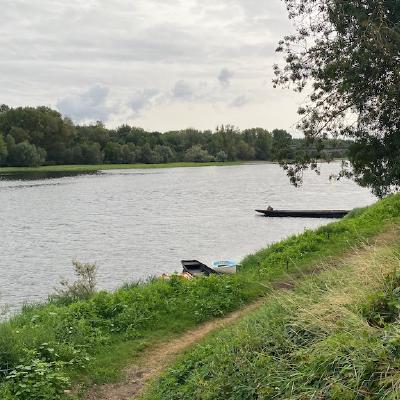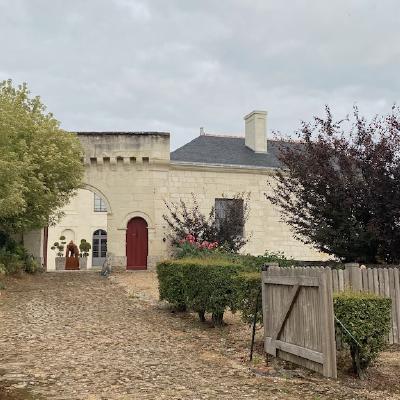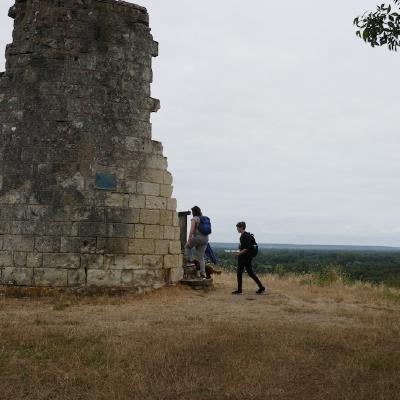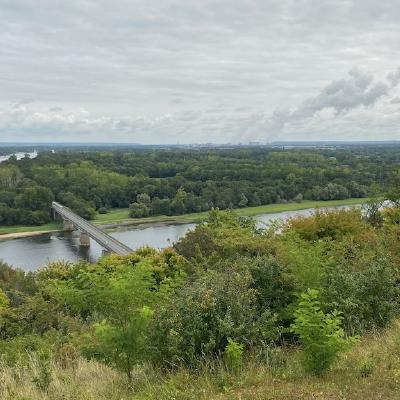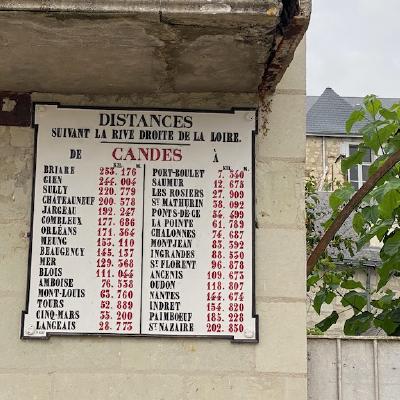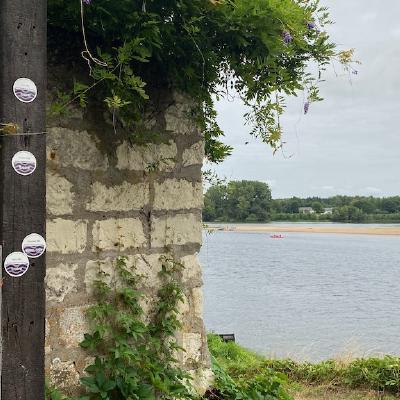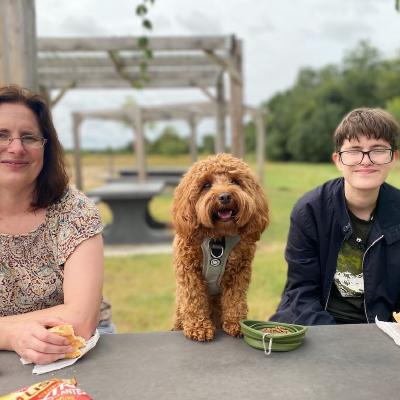Candes-Saint-Martin is close to the confluence of the Loire and the Vienne rivers. We went on a lovely circular walk from the town up through the nearby vineyards to the view point.

First we headed up from the river through the town.
Where we reached the vineyards and sunflower fields.
After heading across the fields above the town where we saw many fields of produce we reached the viewpoint overlooking the confluence of the rivers.
We then headed down and walked back along the edge of the town nearest the Loire - it was amazing to see the markers showing just how high the water had risen in the past.
After the walk we stopped at a picnic spot along the way back just up from the river.


